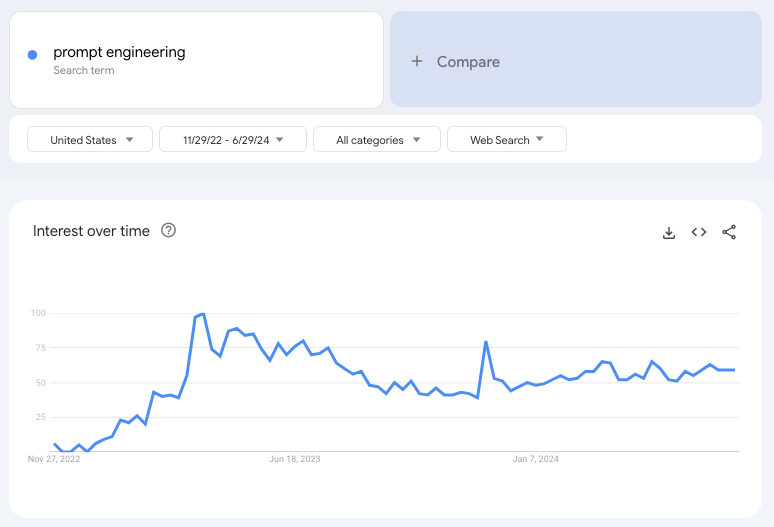Top resources for UX desk research
A curated list & tips on getting started with secondary research.
You decide to start a secondary research project — Where do you look? What resources will you use to find relevant information?
Secondary (or “desk”) research can be a powerful tool if you know where to look. However, identifying concrete resources and starting points for the search can be a hurdle for many researchers.
In this article, we’ll cover what secondary research is, give an overview of the process of conducting secondary research, and offer a curated list with specific tools and sources you can use. By the end, you'll have a go-to collection of bookmarked resources to jumpstart any future secondary research project.
Secondary research in UX
For the unfamiliar, secondary research is the process of searching for, reviewing, and drawing transferable learnings from prior research findings or archival information. Research as you typically think of it — conducting an original research study like a usability test or interview — is primary research. Researchers often choose to conduct secondary research when primary research is infeasible, existing research adequately addresses their questions, or as a supplement to primary methods.
As with any research, the process starts with defining your questions. After that, you identify potential sources of information, review them for relevance to your current questions, and finally synthesize your findings. This end-to-end process is worthy of a deep dive, but for now, we’ll focus on the critical step of identifying potential information resources.
Resources for secondary UX research
So that you’re never left wondering where to look, here are some of our favorite sources for conducting secondary research and some tips for getting the most from them.
Internal
First things first, review internal sources for prior research. The most relevant information for your current secondary research project is usually found inside your team or organization. Existing user research reports, artifacts like journey maps, and analytics dashboards have valuable information that informs secondary research initiatives. For this reason, many teams establish a repository using tools like Dovetail, Confluence, or Condens for ease of access and retrieval.
Once you’ve reviewed internal materials, it’s time to search externally.
Web search with operators
Many begin their secondary research by identifying a few keywords and searching the web. It’s an open-ended approach, but it has its place. Web search casts a wide net — returning results from all over the internet, which is useful for stumbling on new resources or providing a starting point when you don’t know a specific resource to go to directly.
To get the most out of your web searches, start using operators. Operators are search syntax you can use to gain finer control over the results you see. At one time, they were necessary to search, but in the modern era of search UX, they’re a tool for power users. For example, in the below screenshot, you can see I used “before:” to research how people reacted to the iPhone in the early days of its release, filtering out articles that have the benefit of hindsight. To highlight another example, I searched “Use of AI site:.gov ext:pdf” to find how different government entities were providing guidance about the use of AI.

Depending on your search engine of choice, the exact operators can vary a bit. If you’re in the majority who use Google, bookmark this guide documenting all its current operators. There are many more useful operators than the examples above – use The Ahref Blog’s guide to help gain better command over the results you find in your next secondary research.
Google Trends
Staying in the Google search space for a beat, they have another resource you might consider in your secondary research: Trends. This archival resource lets you examine what users are searching for online and how it’s changed over time.
Trends analyzes search queries on Google, letting you understand the interest level in a particular topic. Trends reports the popularity of search terms dating back to 2004 and can give you a rough idea of user interests and behaviors. Below, I used Trends to get an idea of the interest in prompt engineering in general and specifically which AI tools users had the most interest in learning prompting techniques for.
Use this resource to understand what users are actively seeking online. You might search for common pain points or errors to understand their prevalence over time, identify emerging user needs or interests, understand the competitive landscape, or even assess your product's current stage in the adoption curve.
Online reviews
Another valuable source of information for secondary UX research comes directly from our users: Online reviews. Reviews offer a way for users to express their frustrations with, or genuine appreciation for, a service or product. Consider platforms like the Apple App Store, Google Play Store, Amazon reviews, and reputable third-party review sites specific to your product category or industry. You might also consider using an API to make collecting and organizing reviews easier (e.g., Apple and Google offer APIs for their app stores).
Collecting online reviews can give us a rough sense of common pain points, desired features, and overall satisfaction levels. By analyzing patterns across hundreds or thousands of reviews, we can also see how sentiments change over time or start to quantify the severity and importance of our findings. Keep in mind that reviews can be susceptible to biases. Users might be more likely to leave reviews after extreme positive or negative experiences, leaving them prone to skew. To mitigate these issues, combine results from online reviews with other sources and/or interpret them with these biases in mind.
Forums & Social media
Online forums and social media are another resource you should consider when doing secondary research. On sites like X (Twitter) and Reddit, users share authentic experiences and advice about topics relevant to their interests. These online forums dedicated to specific industries or hobbies offer a look into how users discuss their interests, challenges, frustrations, and workarounds in a natural and unprompted way.
Searching for your topic or area of interest on X or a relevant Subreddit will give you plenty of posts and discussions that you can review manually, which might be enough for some simple thematic analyses. For automated data retrieval and complex quantitative analyses, you may consider using an API (e.g., X API, Reddit API).
When reviewing online forums for secondary research, remember to always respect user privacy and adhere to ethical guidelines. Additionally, remember the anecdotal nature of social media posts. Take care to distinguish individual opinions from broader trends to make sure your findings are representative. With the right approach, these forums can add the voice of the user to your secondary research.
White papers & Reports
White papers are reports that present research, data, and commentary on specific topics authored by business, government, or nonprofit organizations. These reports offer insight and provide third-party perspectives within a specific domain. Here are a few go-to resources:
Pew Research Center - A non-partisan think tank that produces research reports on a wide range of topics related to social issues and public opinion.
Forrester - A market research company that produces research reports on business and technology.
Harvard Business Review - A general business publication publishing articles & case studies across sectors.
Statista - An online platform aggregating data visualizations and statistics from market research.
To find relevant research on these resources, combine keywords specific to your industry and research questions. For example, if I were doing secondary research about the user experience of air travel, I might search for “Airline + Experience” on the above resources. Doing so produced a graph with the key drivers of in-flight experiences in the post-COVID era, a consumer experience index rating of US airlines, and an in-depth case study of how an airline repaired user trust after a controversial event.
There are a few limitations to these types of reports. The relevance of the information in white papers might vary significantly; sometimes, you’ll find a white paper that only offers tangential answers to your research questions, while others will hit the nail on the head. Also, they often come with expensive access subscriptions – check to see if your organization has licenses to these resources.
UX case studies & Best practices
Consider reviewing insights from recognized authorities in the UX space. The Nielsen Norman Group has articles offering usability best practices for specific interactions (e.g., checkbox design or multimedia for web guidelines) and industries (e.g., medical or e-commerce). MeasuringU offers many free articles, including frequent competitive benchmark reports across verticals (e.g., banking websites, flower delivery websites, home furniture websites, etc.). Finally, Baymard Institute publishes third-party UX research reports on websites across industries. While much of their content is paid, they have some free content, including benchmarks, page design templates, and articles.
These guidelines, case studies, and reports can be highly relevant to your research questions and are always worth checking when doing desk research. When interpreting these resources, remember that user experience is context-dependent; adapting and re-contextualizing their guidance is essential when synthesizing your secondary research findings.
Academic articles
Academic articles can provide rigor and depth to your secondary research. Academic, peer-reviewed articles provide you with research findings reviewed by experts, making them a very credible source. In addition to foundational research findings, academic articles typically contain a literature review summarizing existing related research, which can save you time and effort. Your go-to resources for academic articles should include a general scholarly research platform (either Google Scholar or ResearchGate) and a collection of UX-specific publications like the Journal of User Experience, ACM Journals, and the Human Factors & Ergonomics Society. Articles from these journals form the foundations of our field and explain the “why” behind many of our industry best practices.
The bottom line…
Secondary research is one of many valuable approaches to learning about users, but many researchers don’t know where to start their search. A list of specific tools and resources can make it much more approachable. This article summarizes eight information sources you can leverage in your secondary research, with specific resources you can bookmark. By leveraging the resources and following the tips in this article, you will have a concrete starting point for any secondary research project.






This is a really helpful article. Thanks for sharing!